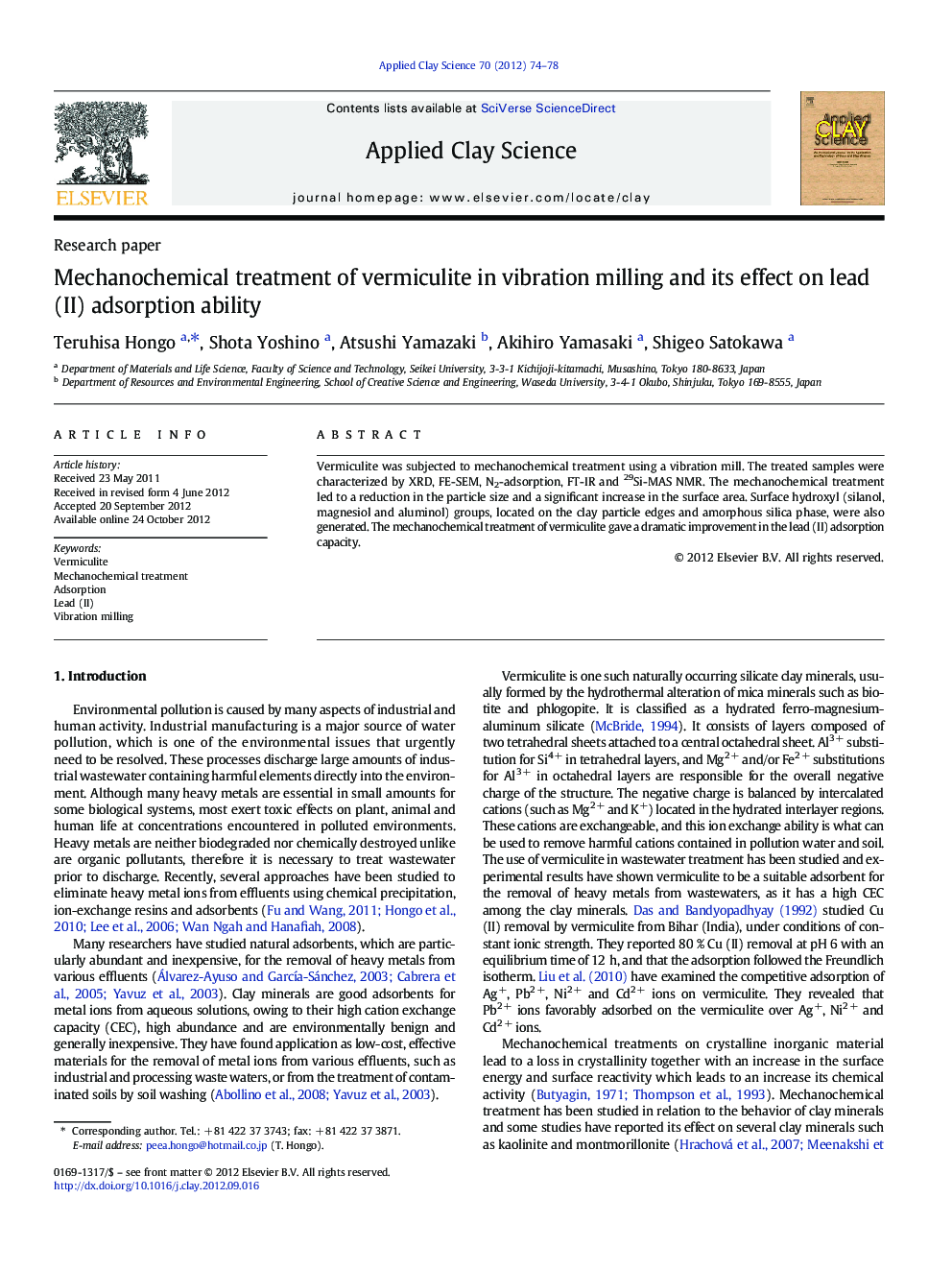| Article ID | Journal | Published Year | Pages | File Type |
|---|---|---|---|---|
| 1695086 | Applied Clay Science | 2012 | 5 Pages |
Vermiculite was subjected to mechanochemical treatment using a vibration mill. The treated samples were characterized by XRD, FE-SEM, N2-adsorption, FT-IR and 29Si-MAS NMR. The mechanochemical treatment led to a reduction in the particle size and a significant increase in the surface area. Surface hydroxyl (silanol, magnesiol and aluminol) groups, located on the clay particle edges and amorphous silica phase, were also generated. The mechanochemical treatment of vermiculite gave a dramatic improvement in the lead (II) adsorption capacity.
► In this study, we performed a mechanochemical treatment of vermiculte in vibration milling. ► The mechanochemical treatment led to a significant increase in the surface area and the surface hydroxyl groups. ► The mechanochemical treatment of vermiculte gave a dramatic improvement in the lead (II) adsorption capacity.
